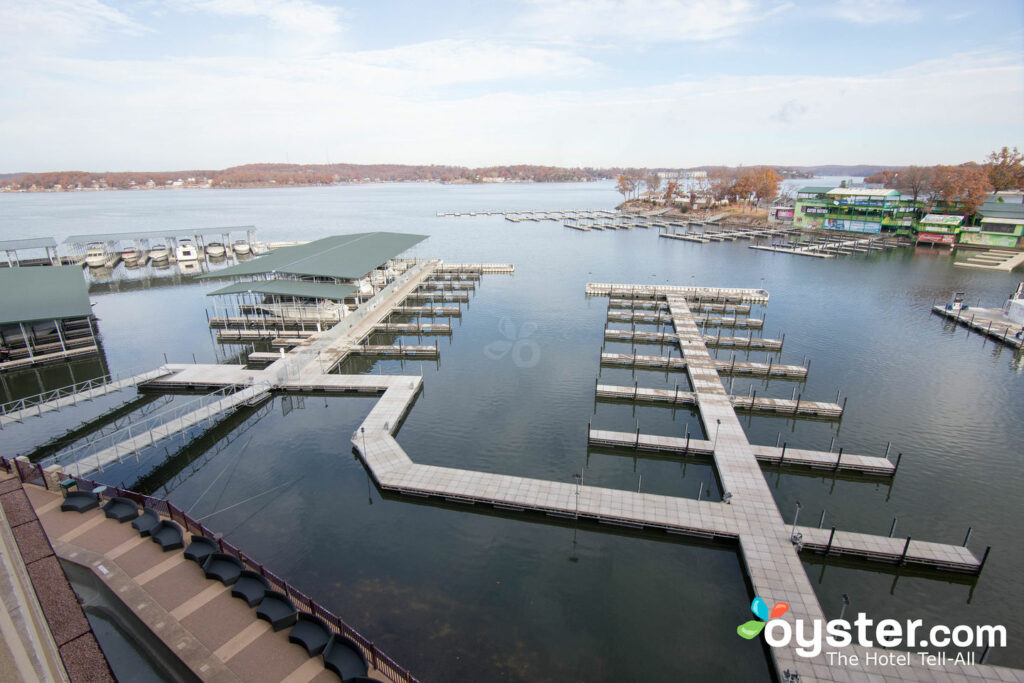Everyone knows that swimming -- one of the most popular, and perhaps wholesome, pastimes of summer -- can be dangerous. That's why your mother always told you not to swim too far out in the ocean, and to wait 15 minutes after lunch before you cannon-balled back into the pool. But there are some dangers that no one thinks about; some of them are out of mind because they're rare, others because they're new hazards, others because they can seem benign. So here are six swimming dangers you've either never heard of, or never thought about, that you should definitely be aware of before you dive in this summer.
1. E.coli
We often hear of food product recalls thanks to E.coli, and consuming contaminated meat is the most common way Americans are infected with the bacteria. But swimmers need to be wary as well, as E.coli can also thrive in lakes and ponds. Hugh Pennington, professor of bacteriology at Scotland’s University of Aberdeen, explains to Oyster.com, “The only E.coli that we really need to worry about is E.coli O157. It gets commoner the closer one is to the North and South Poles — more frequent in Scotland than England, commoner in the U.K. than southern Europe, commoner in Canada than the U.S., commoner in Argentina than Brazil, commoner in Australia than the Philippines.” However, Missouri’s Lake of the Ozarks has been known to have outbreaks (caused by raw sewage dumping) and researchers have reported alarmingly high levels of E.coli in rivers in South Africa’s Johannesburg.
Pennington, who served as the chair of the Pennington Group enquiry into the Scottish E.coli outbreak in 1996 and Chairman of the Public Inquiry into the outbreak in South Wales nine years later, added that dangerous levels of E.coli most often form in ponds and lakes, but “Even the danger from the highest risk body of water is very low.” Children under five are most likely to be affected, and symptoms usually include bad stomach cramping and bloody stool. The worst cases include issues such as kidney damage and brain damage. “These complications only affect a minority of cases, but can’t be prevented once the infection has happened,” Pennington says. “[There is] no obvious way to tell whether a body of water is safe, but avoid any with manure contamination….Chlorinated swimming pools are safe. The sea is quite safe.”
2. Clinging Jellyfish
Beachgoers in the U.S. are usually aware — but not too concerned — that entering the water means taking on the risk of a jellyfish encounter, especially once the ocean warms up towards the end of summer; fortunately, most of these encounters are relatively harmless, resulting in a light sting that lingers for 24 hours or so. (It’s the box jellyfish — native to Australia’s waters — that has a sting that can be fatal to humans.) But this summer, the rivers of New Jersey have seen an influx of clinging jellyfish, which may have arrived in the area via a ship that they, well, clung to. These jellyfish, each about the size of a dime, can deliver a incredibly painful sting that, in the worst case scenario, can lead to kidney failure. One man in New Jersey was hospitalized last month from a sting from a clinging jellyfish that he encountered when swimming in the rivers. Fortunately, those who opt to swim in the ocean should be safe, as its rough waters keep this variety of jellyfish away.
3. Super Bacteria
Beach in Rio de Janeiro
As the Olympics approach, more and more concerns are revealed about the state of Rio de Janeiro. The latest is a “super bacteria” that’s been discovered in the waters off of Rio’s most popular beaches, two of which surround the bay where Olympic sailing events are scheduled to take place. Scientists have not called for the moving of the competitions, however, and what harm the bacteria can cause is not yet known — although it’s suspected to be the catalyst of a severe skin reaction one Olympian suffered while training, and it very likely could be quite dangerous as it is drug-resistant. As CNN reported, German Paralympic sailor Heiko Kroger said of the waters: “It’s a nice sailing area but every time you get some water in your face, it feels like there’s some alien enemy entering your face. I keep my nose and my lips closed.”
4. Primary Amebic Mengioencephalitis
Primary Amebic Mengioencephalitis (PAM) is a fatal infection in the brain caused by the entering of Naegleria fowleri, an ameba found in warm freshwater like rivers and lakes, into the body via the nose. Fortunately, PAM is extremely rare. Kate Fowlie, spokesperson for the Centers of Disease Control and Prevention (CDC), tells Oyster.com, “Each year, hundreds of millions of visits to swimming venues occur in the U.S. that result in 0-8 infections. In the 10 years from 2006 to 2015, 37 infections were reported in the U.S.” The majority of those cases were people who were infected by contaminated water while enjoying recreational activities, and this summer, an 18-year-old woman died from the infection after a white-water rafting trip in Charlotte, NC. Fowlie explains, “The only certain way to prevent a Naegleria fowleri infection due to swimming is not to participate in fresh water-related activities. However, you can take personal actions to reduce your risk of infection by limiting the amount of water going up the nose.” This can mean using nose clips and avoid stirring up mud while in the water.
5. Electric Shock Drowning
Motorboats in Seattle
Of course, swimmers are aware that drowning is a peril they can encounter; in fact, the CDC reports that drowning is the fifth most common cause of unintentional injury death in the United States. Most drowning deaths are the result of a lack of swimming ability, alcohol consumption, or seizure disorders. Another cause, albeit much less common, is electric shock — resulting in ESD, or electric shock drowning. ESD is drowning caused by a leaked AC current in fresh water entering a swimmer’s body, leading to skeletal muscular paralysis that makes it impossible for the victim to swim. “Typically any type of electrical equipment out on the waterfront — a dock with lights, any device (like a boat) that plugs into a receptacle [can leak electricity and lead to the death of nearby swimmers],” Captain David Rifkin, who conducted extensive testing on ESD for a Coast Guard study in 2008, explained to Oyster.com. “It’s not very common,” Rifkin said, “but the number of deaths is likely far greater than the records show, since most autopsies simply classify them as ‘drownings.'”
Most boats and other waterfront devices with electrical equipment do not leak electricity — and if they do, they have safety fault protection measures in place to ground the electricity. However, “the problem is that the infrastructures aren’t maintained and deteriorate over time, becoming a ticking time bomb,” said Rifkin. While the National Fire Protection Association (NFPA) has electrical codes in place, and the American Boat and Yacht Council (ABYC) has created voluntary standards, often the guidelines are not followed by boat users and marinas. Even if they are (meaning annual inspections are performed), due to elements such as wind, waves, sun exposure, and moisture in electrical equipment, “what was safe yesterday is not necessarily safe today,” Rifkin clarified. So to be cautious, the Electric Shock Drowning Prevention Association (ESDPA) urges swimmers to stay at least 150 feet away from docks in fresh water. (Salt water does not put swimmers at a risk of ESD because it is a better conductor than the human body.) “If you can taste the salt in the water,” Rifkin said, “ESD should not be an issue.” But be sure to note that water that is brackish (and salty) one day could be fresh the next due to local effects of runoff and tides, so always be sure to check.
You can learn more about ESD, and how to prevent it, at the ESDPA website.
6. Chlorine
A pretty pool in Miami
At the end of the day, chlorine is actually a good thing and the pros generally outweigh the cons. The chemical keeps pools clean by killing bacteria and germs, eliminating the growth of algae, and oxidizing body oils and sweat from swimmers. However, chlorine has been linked to skin and eye infections, respiratory defects (especially for those with asthma), and — in extreme cases, cardiovascular defects. After all, it is a chemical that can produce toxic gases. As long as swimmers limit their time in chlorine, though, they should not experience any major issues. Outdoor chlorinated pools are also often the safer bet, as many of the gases released are extinguished in the air, and it’s a good practice to stay hydrated, wear goggles, and shower after swimming.
Related Links:
- 6 Deadliest Tourist Attractions in the World
- 10 Zika-Free Beach Destinations
- Is It Safe to Travel to Mexico During Hurricane Season?
All products are independently selected by our writers and editors. If you buy something through our links, Oyster may earn an affiliate commission.




